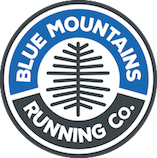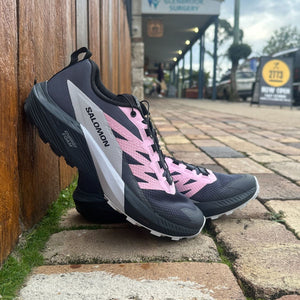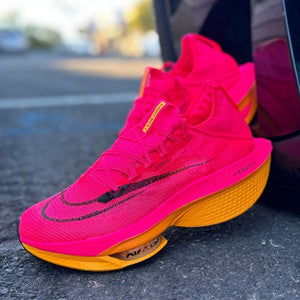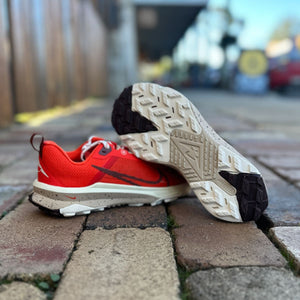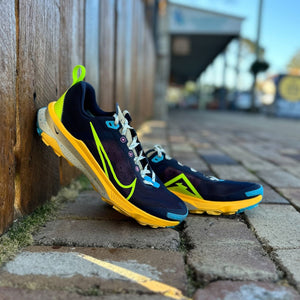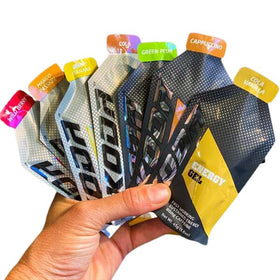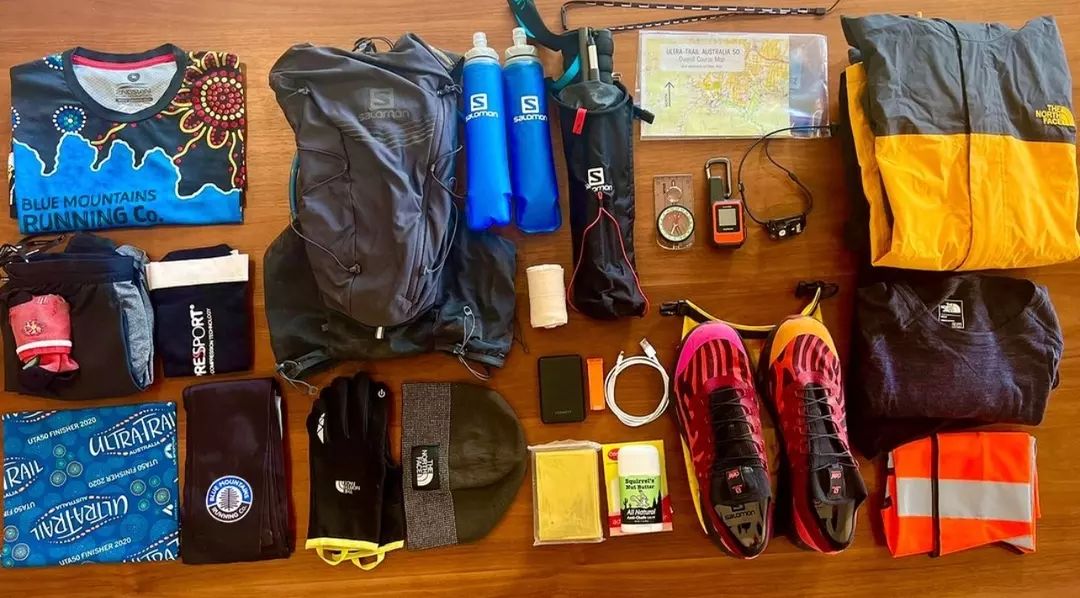
How to Prepare for UltraTrail Australia: Tips and Strategies
Nutrition and Hydration Needs For Ultra Running: Fuelling Your Body for Success
Nutrition and hydration are critical aspects of preparing for and completing in any race, especially over longer distances.. Planning your fuelling strategy is essential for optimal endurance, while boosting performance and preventing fatigue, cramps and dehydration.

How to effectively fuel your and hydrate your body for long distance running
During an ultra marathon, your body is subjected to prolonged periods of physical exertion. This can often span several hours or even days. To perform at your best, you need to replenish the energy, nutrients and hydration your body needs.
Carbohydrates: As a key source of fuel for endurance activities, carbohydrates provide readily available energy. They are essential for replenishing glycogen stores which can assist in maintaining energy levels. One of the most efficient ways to achieve this during the UTA is to incorporate easily digestible carbohydrates into your nutrition plan. You can do this using energy gels such as the Precision Hydration Fuel Gel 30 which contains a balanced composition of carbohydrates. Other popular options are energy chews like the Clif Shot Bloks and Hammer Gels . These easy to consume gels provide a quick and convenient source of energy to runners.
Protein: Energy is not the only essential requirement the body needs when competing atUTA. Post race recovery is an essential part of preparation and It is important to include a form of protein in your nutrition schedule. Muscle breakdown is very common during endurance runs and incorporating protein in your recovery can aid in muscle repair. Tailwind Rebuild Recovery can help rebuild damaged muscle tissue as well as mitochondrial protein. If you are looking for a more convenient protein source, the Tailwind Rebuild Stick is a delicious bar with the same ingredients and benefits as the drink and can also be taken in your pack during the race. Other protein-rich foods such as nuts, seeds, jerky, or protein bars can also be included in your nutrition plan to support muscle health..
Hydration: The most crucial component of your nutrition plan is hydration. During an ultra marathon like Ultra Trail Australia, the body loses fluids at an accelerated rate and dehydration can set in quickly. Dehydration can lead to a decline in performance, muscle cramping and spasming, as well as other serious health issues. Proper hydration is essential and plain water may not suffice during intense, physical exertion. It's important to drink water and fluids that contain electrolytes. It is important to drink fluids regularly throughout the race, even if you don't feel thirsty.
Timing and frequency of nutrition and hydration intake
Getting the timing and frequency of nutrition and hydration intake during the race is crucial. The best way to gauge your intake requirements is during training. It's also important to listen to your body and pay attention to any signs of hunger, thirst, or discomfort. Experiment with different foods and fluids during your training runs to find what works best for you and your body. Also avoid trying new foods or supplements on race day, stick to your tried and tested products, brands and flavours to avoid any digestive issues or discomfort.

It's important to plan and pace your intake, taking into account the distance and duration of the race. Eating smaller, more frequent meals or snacks and paying close attention to your own body's needs and limitations.
Proper nutrition and hydration are crucial during an ultra marathon like Ultra Trail Australia. Fueling your body with a combination of carbohydrates and protein, along with regular hydration, can help sustain energy levels, prevent muscle breakdown, and optimise performance. It's important to plan and practice your nutrition and hydration strategies during training runs to find what works best for you. Remember to listen to your body, pace your intake, and stay adequately hydrated throughout the race. With proper nutrition and hydration, you can fuel your body for success and conquer the challenges of an ultra marathon.
Nutrition and Training in the Lead-up to the Race: Building a Strong Foundation

Proper nutrition and training are essential components of preparing for a 50km or 100km ultra marathons like the Ultra Trail Australia. Building a strong foundation through a well-balanced diet and structured training plan can significantly improve your performance and increase your chances of success on race day.
Pre-Race Nutrition
Nutrition plays a critical role in supporting your body's energy levels, endurance, and recovery during the training period. It's important to fuel your body with a well-balanced diet that includes carbohydrates, proteins, healthy fats, and a variety of vitamins and minerals.
In addition to a well-balanced diet, it's important to stay hydrated during your training period. Proper hydration can help optimize your performance, prevent muscle cramps, and aid in recovery. Make sure to drink water or electrolyte-containing fluids before, during, and after your training runs. Listen to your body and drink according to your thirst levels, as the amount of fluid needed can vary depending on factors such as temperature, humidity, and sweat rate.
Pre-Race Training
Adequate training is another crucial aspect of preparing for an ultramarathon. It's important to have a structured training plan that gradually builds your endurance, strength, and stamina. Incorporate a mix of trail running, hill training, and cross-training activities such as cycling or swimming to improve your overall fitness. Gradually increase your mileage and elevation gain over time to avoid overtraining and reduce the risk of injuries. Make sure to also include rest days in your training plan to allow your body to recover and reduce the risk of burnout.
In addition to physical training, mental preparation is also key for a successful ultramarathon. Mental strength and resilience are crucial during long races, as they can help you push through tough moments and stay focused on your goals. Practice mental techniques such as visualization, positive self-talk, and mindfulness during your training runs to build mental resilience and prepare for the challenges of race day.
First Time Race Day Strategies: Navigating the Course and Managing Race Logistics

Whether this is your first or fiftieth ultra marathon, everyone is nervous on race day and while there will be many people on hand to answer your questions, it’s important to have a race day strategy in place to navigate the course and manage race logistics effectively.
With the race covering stunning and challenging trails in the Blue Mountains, having a plan can help you make the most of your race day experience. Here are some first-time race day strategies to help you successfully complete.\
Familiarise Yourself with the Course: Take the time to study the race course map before race day and become familiar with the terrain, elevation gain, and aid station locations. Make notes of any technical sections, challenging climbs or any other sections in the course you need to be aware of. Familiarising yourself with the course will help you to plan your pacing, nutrition and hydration strategies accordingly.
Plan Your Nutrition and Hydration: Once you are familiar with the course map it is important to have a rough plan for your ultra-marathon nutrition and hydration schedule. Proper nutrition and hydration are crucial during an ultra-trail marathon and having a plan will take the guesswork out of it during the race. Develop a race day nutrition plan that includes pre-race meals, on-course fueling, and post-race recovery. Practice your nutrition plan during your training runs to ensure it works for you.
Pace Yourself: One of the keys to success in any running race is pacing. It can be easy to start the race hard and fast while you are feeling fresh and excited. However, this can lead to burnout later in the race and can increase your chance of injury. During training, study the course map and find your perfect pace and strategy. Save energy for the challenging sections and stick to your planned pace to ensure you have the stamina to push through the last stretch when you are at your most fatigued. Monitor your pace and effort level throughout the race and avoid getting caught up in the excitement of the race start.

Carry Mandatory Gear: For the safety of all participants, UTA race has mandatory gear requirements including head torches, clothing, nutrition, first aid and emergency equipment. Familiarise yourself with the gear requirements and pack your bag to use during training. Ensure the items are easily accessible and practice your stops and what to do in case of a first aid incident or emergency. UTA is a grueling race and the weather can be extreme, so you can never be too prepared for any situation that may arise.
Stay Flexible and Adapt: While it is a good idea to have a plan you have practiced during training, it is also important to remember that race day can be unpredictable. Be flexible and ready to adapt to changing circumstances including unexpected weather changes, trail conditions, and race logistics. Remember that safety is the top priority, so ensure you stay focused and make adjustments to your race plan as needed.
Enjoy the Experience: Last but not least, remember to enjoy the experience! UTA takes place in a breathtakingly beautiful location. It is the perfect opportunity to challenge yourself, connect with fellow runners, and immerse yourself in the trail running community. Take in the beauty of the Blue Mountains, embrace the adventure and enjoy the journey to the finish line.
Post-Race Recovery: Taking Care of Your Body After the Race
Completing at UltraTrail Australia is a remarkable achievement that requires immense physical effort. Once you have crossed the finish line, it can be easy to think that all the hard work is done. However, it's crucial to prioritise post-race recovery to allow your body to heal, rejuvenate and prevent injury. Proper post-race recovery is essential for optimising your recovery which will assist with your performance in future races and maintaining your overall health and well-being. Here are some top tips for post-race recovery.

Rest and Sleep: One of the most crucial elements of recovery is rest and sleep. We know you’ll be tired! Your body needs time to repair and rebuild after the demanding physical challenges of UTA. Make sure to prioritise quality sleep to allow your muscles to recover and your immune system to strengthen. Listen to your body by resting and sleeping when you need to and not taking on other physically demanding activities in the days following the race. Give yourself enough time to rest and don’t feel the need to jump straight back into regular daily activities straight away.
Hydration and Nutrition: Just as nutrition and hydration is important during the race, it is equally important to replenishing your body with proper post-race hydration and nutrition. After a long-distance race, your body needs to replenish depleted energy stores and repair muscle tissues. Make sure to consume a well-balanced meal with a combination of carbohydrates, proteins, and healthy fats within the first few hours after the race. Continue to fuel your body with good healthy foods that are high in protein to help your muscles in their recovery. Keep up with hydration and drink a combination of water and electrolytes to replace any fluids lost during the race. Avoid caffeine as this can cause dehydration and avoid anything high in sugar to allow your blood sugar levels to regulate.
Active Recovery: While rest is absolutely crucial, it is important not to stop physical activity completely after the race. Try incorporating light, low-impact activities into your post-race recovery routine. Gentle activities like walking, stretching, or yoga can help promote blood flow, reduce muscle soreness, and improve flexibility. However, avoid strenuous exercises or high-impact activities during the initial days of recovery this will allow your body to fully heal.
Physical Therapies: Consult with a professional physical therapist or sports massage therapist to tailor a recovery plan that best suits your needs. They may develop a plan that incorporates techniques such as foam rolling, massage, and compression therapy. All of these things can help improve circulation, alleviate muscle soreness, and aid in recovery.

Mental Wellbeing: Post-race recovery is not only about physical healing but also taking care of your mental wellbeing. Completing an endurance race like UTA can take a toll on your mental health. Take the time to allow yourself to process the experience, including any emotions or thoughts that may arise. UTA is an extremely challenging race and it takes just as much mental stamina as it does physical strength to get through it. Engage in activities that help you relax, such as mindfulness, meditation, or spending time in nature. Seek support from friends, family, or a mental health professional if needed and talk about the challenges you faced and how it made you feel.
Listen to Your Body: It's essential to listen to your body during the post-race recovery period. Pay attention to any signs of discomfort, pain, or fatigue, and adjust your recovery routine accordingly. Avoid pushing yourself too hard or returning to intense training too soon, as it can increase the risk of injury or hinder the recovery process. If something doesn’t feel right or you think it is taking longer than expected to recover, don’t hesitate to see your healthcare professional to avoid the risk of long term injury.
Stay Positive: Finally, one of the most important components of post-race recovery is maintaining a positive mindset. Be patient with the recovery process and take every step during recovery as a positive one. Remember that recovery is a crucial part of the training process and essential for long-term success as a runner. Take each step as it comes with a positive attitude and don’t rush the process.
Post-Race Reflection: Learning from Your Experience and Planning for Future Races

After crossing the finish line, it's essential to take time for post-race reflection. This will allow you to learn from your experience, plan for future races and unpack any mental challenges or regrets that may still be lingering after the race. Reflecting on both your physical and mental health can help you recover effectively, identify areas for improvement, and help you to set new goals for training and also future races. Here are some areas of reflection that you may find helpful.
Mental Health: It's important to reflect on your emotions, thoughts, and overall mental well-being after the race. Allow yourself to process the experience, including any challenges and moments of triumph. Take your mind through the race from start to finish and identify any points along the way that bring up emotions, be them negative or positive. Be kind to yourself and practice self-compassion as you reflect on your performance. It's also helpful to talk to fellow runners or seek support from friends, family or a professional if needed.
Learn from Your Experience: Everything that happened during the race is an opportunity to learn and improve next time. Reflect on your race performance and identify areas you did well in and make note of techniques to use in future races. As well as identifying areas for improvement and writing down ways you would do those things differently or new techniques to investigate.

Set Future Race Goals: Once you have reflected on your experience running UTA, you can then use this information to set new goals for future races. These goals could be related to improving your time, mastering technical trail sections, improving your pacing or tackling longer distances.
Post-race reflection is crucial for physical and mental recovery as well as for planning your future races. Take the time to reflect on both your physical and mental health, learn from your experience and set training and future race goals. By incorporating post-race reflection into your routine, you can continue to grow as a runner and enhance your overall racing experience in future races.
Mandatory Gear Requirements: Be Prepared for the Trail

Here is a list of the mandatory gear requirements for Ultra Trail:
- Long Sleeve Thermal Top (polypropylene, wool)
- Long Leg Thermal Pants (polypropylene, wool)
- Waterproof and Breathable Jacket with Fully Taped (Not Critically Taped) Waterproof Seams and Hood

Salomon Womens Bonatti Trail Waterproof Jacket
- Beanie, Balaclava or Head Sock (Buff)

The North Face Dipsea Cover It 2
- Full-Fingered Lightweight Thermal Gloves (Polypropylene, Wool)

The North Face PLG Flashdry Gloves
- High-Visibility Safety Vest that complies with Australian Standard AS/NZS 4602:1999 - D/N Class for Day and Night Time Wear
- Headlamp
- Small Backup Light

Petzl Headlamp Actik Core -600 Lumens
- Mobile Phone in Working Order with Fully Charged Battery and working SIM Card
- Compass
- Whistle
- Emergency Space Blanket (or Light Bivvy Sack Equivalent)
- Compression Bandage (Minimum Dimensions 7.5cm Wide x 2.3m Long Unstretched)
- Lightweight Dry Sack
- Water Bottles or Bladders, 2 Litre Capacity

Salomon Hydration Pack Advanced Skin 12 Set
- Food Bars / Portions

- Ziplock Bag for Personal Rubbish
- Waterproof Map Case
- Long Leg Waterproof Pants
- 100-Weight (Minimum) Long Sleeve Synthetic Fleece Top

Patagonia Micro D Pullover Mens
If you need additional help, support or advice, our friendly team can help. Visit our Glenbrook store or contact us via email - we’re here to help.
